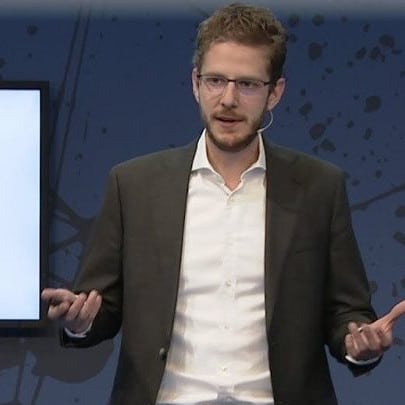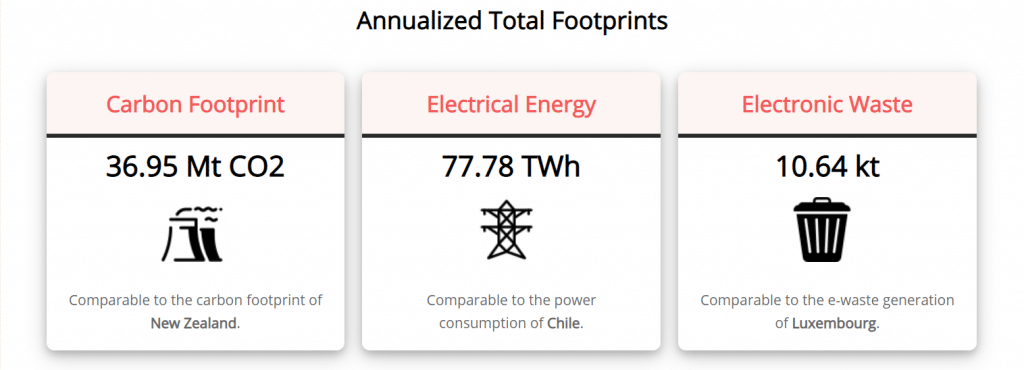As Bitcoin ’s market cap has continued to grow into hundreds of billions of dollars over the past several years, so too has the mining industry that supports the network: according to some estimates, Bitcoin’s mining industry generated as much as $5.4 billion in revenue last year.
However, the growth of the Bitcoin network, as well as the Bitcoin mining industry, has not come without a steep cost to the environment.
Indeed, there have been many reports on the Bitcoin network’s energy consumption problem. However, Alex DeVries, Blockchain expert at accounting firm PriceWaterhouseCoopers, claims that massive amounts of e-waste will eventually be generated by outdated mining equipment, 98 percent of which he says becomes obsolete within one and a half years after their initial use.
Indeed, through his website, Digiconimist, which Mr. DeVries founded to highlight Bitcoin’s energy problem, Bitcoin generates as much e-waste each year as the nation of Luxembourg, which has a population of over 600,000 people (2018).
“It’s impossible for 98 percent of [mining] devices during their lifetime to make the calculation that actually results in a reward.
“The shocking thing is the average lifetime of a bitcoin mining machine is one and a half years, because we have a new generation of machines which are better at doing these calculations,” Mr. DeVries told the Telegraph.
He also pointed out that the nature of Bitcoin mining is such that myriad machines are constantly competing for a reward that most of them will never get: “they are sort of participating in a massive lottery and every 10 minutes one gets lucky and gets to produce the next block,” he explained.

Alex DeVries, blockchain expert at accounting firm PriceWaterhouseCoopers.
“That means it’s impossible for 98 percent of the devices during their lifetime to make the calculation that actually results in a reward. So, the rest are just running pointlessly for a few years, using up energy, and producing heat, and then they will just get trashed because they can’t be repurposed. It's insane."
The footprint of a single transaction is the same as 780,650 Visa transactions or spending 52,043 hours watching YouTube.
According to Digiconmist, it is estimated that the amount of energy needed to run the Bitcoin network annually has surged to a record-breaking 77.78 terawatt-hours. That's roughly the same as the entire electrical consumption of the nation of Chile, which has a population of more than 18 million people who use an estimated 2,028.89 kilograms of oil equivalent per capita each year (as of 2015).
However, it's important to note that because of the use of renewable energy in mining operations, the carbon footprint of the Bitcoin network is equivalent to the carbon footprint of New Zealand, which has a population of roughly 4.794 million (as of 2017) who use 4,444.73 kilograms of oil equivalent per capita each year. (2015)

Source: Digiconomist
Previously, researchers at the University of Cambridge have estimated that the Bitcoin network uses more energy than the entire nation of Switzerland, which has a population of more than 8 million people who use an estimated 2,960.07 kilograms of oil equivalent per capita each year.
Based on these estimates, as well as the estimated e-waste generated by the Bitcoin mining industry, Mr. DeVries has said that the footprint of a single transaction is the same as 780,650 Visa transactions or spending 52,043 hours watching YouTube.
Time for innovation
But does this mean that we should all stop using the Bitcoin network? While there are certainly some that argue that this is the solution, others are calling for innovation and policy decisions that could alleviate the environmental impact of Bitcoin.
Indeed, in spite of its massive carbon footprint, the other social benefits of the Bitcoin network are increasingly well known. In the July 2018 edition of Energy Research & Social Science, researcher Jon Truby of Qatar University wrote that “blockchain technology has been advocated as being capable of delivering environmental and social benefits under the UN’s Sustainable Development Goals.”
Therefore, “[...]The question is how to encourage a shift to less energy-intensive Blockchain technology without damaging the sector, “ Truby wrote.
Some blockchain networks--including Ethereum and Decred--have already made the effort towards switching from Proof-of-Work (PoW) consensus mechanisms (which are very energy-intensive) to Proof-of-Stake (PoS) consensus mechanisms or blended mechanisms that use elements of both PoW and PoS.
What do you think the solution is for reducing the impact of the Bitcoin network on the environment? Let us know in the comments below.

















